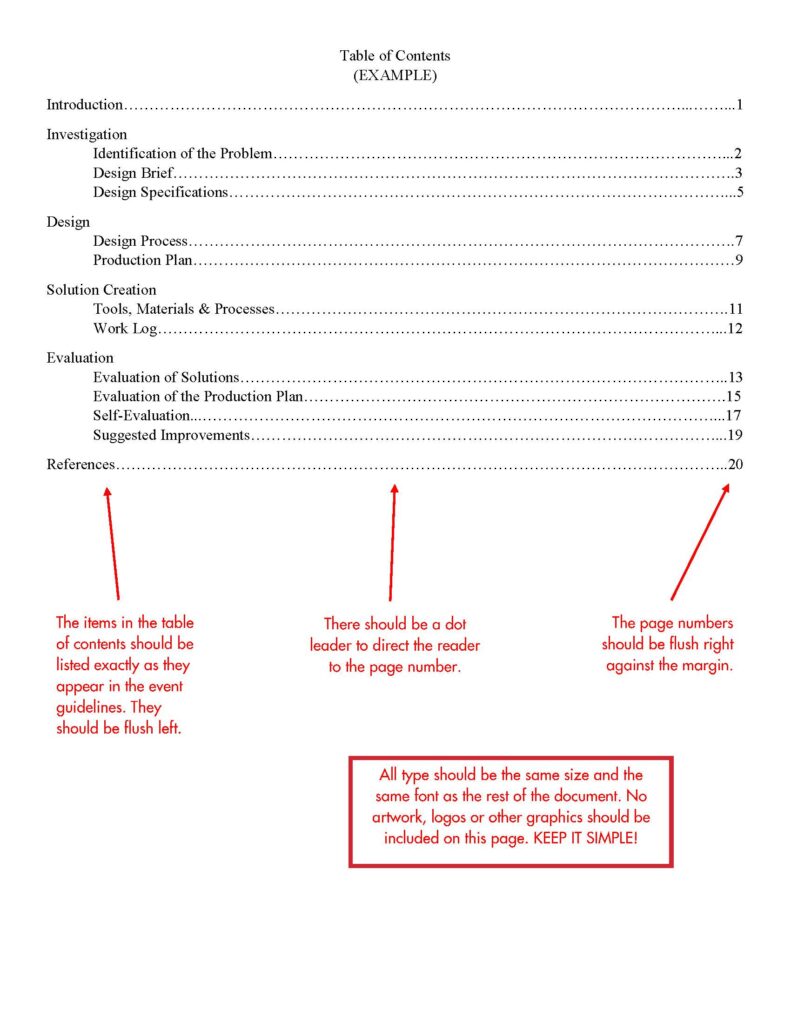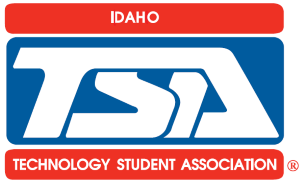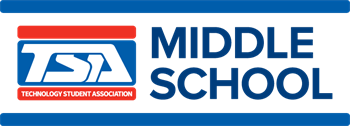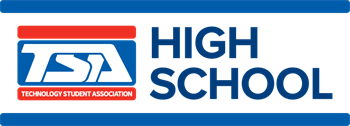Dress Code:
Everyone who attends the Idaho TSA State Leadership Conference must comply with the TSA Dress Code policy.
*All registrants must wear official conference identification name badges at all times.
REQUIRED COMPETITION ATTIRE:
- Shirt: official royal blue TSA shirt
- Pants or skirt: gray
- Shoes: black dress shoes worn with black or dark blue socks, hosiery (optional); open-toed shoes or sandals are acceptable (unacceptable: athletic shoes; flip-flops; military boots; or work boots)
Also required for the middle school or high school level Chapter Team event only (but may be worn for other competitions if preferred by participants):
- *Blazer: navy blue with official TSA patch
- *Tie: official TSA tie (males)
- *Females are not penalized for wearing the official TSA tie to Chapter Team or any other competitive event
GENERAL SESSION ATTIRE:
- Shirt: the official TSA shirt (royal blue) is preferred, button-down shirt or a polo/golf shirt (unacceptable: t-shirts; halter tops; tank tops)
- Dress, skirt, or pants: (unacceptable: jeans; baggy pants; exterior pocket pants; shorts)
- Shoes: dress shoes worn with dark socks, hosiery (optional); open-toe shoes or sandals are acceptable (unacceptable: athletic shoes; flip-flops; military boots; or work boots)
CASUAL ATTIRE:
Conference or Chapter T-shirts, shorts, or jeans. Casual attire may not be worn at competitions or General Sessions.
Idaho SLC Documentation & Style Guide:
Most competitive events require the creation of a documentation notebook.
Each event that requires a notebook will require that certain specific items be included – for example, some projects may necessitate drawings or photographs while others will not; some may require photo release forms while others may require work logs. Still, despite their differences, they do have a lot in common. It is the intent of this guide to help you create high quality documentation notebooks for your projects – regardless of the competitive event – for state and national conference submission. Please review and follow this guide when preparing your documentation notebooks!
FREQUENTLY ASKED QUESTIONS:
Do you need documentation?
The first thing you need to figure out is if you even need a documentation notebook at all. The answer is probably yes, but there are a few events that do not require a notebook. If your project does not require a notebook, turn in only what the contest guidelines call for; nothing more… and nothing less. If you turn in more than is required, there is a good chance that all the additional material will NOT be considered by the judges; if you turn in less than is required, at best you could receive a penalty and at worst, your project could be disqualified. In any case, it is a good idea to read over the rules (ALL THE RULES) for an event before you begin and assemble whatever materials you will need to complete the project as you go – including a notebook!
DO NOT wait until the last minute to assemble your notebook. Start with the notebook so you can accurately put things in as you do them (like work logs) rather than trying to re-create them later!
The rules? What are the rules? Where do I find them?
The rules for all of the competitive events are located in the National TSA Competitive Events Guide {there is one for middle/junior high (Level I) and one for high school (Level II)}. You receive access to this once registered; It is not provided by the state.
When do you need to start the notebook?
You need to start building the notebook as you work on your project. Most contests will require you to keep a work log or include the preliminary drawings that you create as you work through the process. Do not wait until you are finished with the project to create your notebook! If you do, you are liable to leave out crucial information that could mean the difference between winning a medal or not.
Where do you look to see if you need a notebook?
Look at the rules for your competitive event. Find the Regulations or Specific Regulations section. Here you will see exactly what is required for the contest, including information on the documentation notebook. Below is an example from the High School National Competitive Events Guide showing the Regulations Section:
The Notebook:
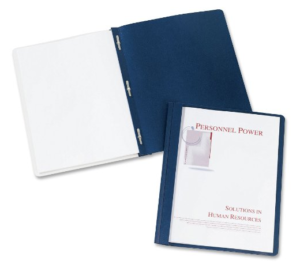
- The size of the notebook depends on the amount of material you are required to submit.
- Do NOT use pocket portfolios, spiral notebooks, stapled sheets, or 3-ring binders.
- Use report type covers like those pictured here.
- Clear cover
- Fasteners to secure your pages
- All pages must be secure in the notebook
The Content:
For all events that require a notebook/album, the following items are to be in this order:
- Title Page
- Table of Contents (if needed)
- Content
- References/Works Cited/Bibliography
For all applicable events, written work – including citations or references – must follow MLA (Modern Language Association) style.
For additional help with using the MLA format style, go to https://owl.english.purdue.edu/owl/resource/747/01/
Yes, we know that the MLA style does not require a Title Page. Documentation to be submitted at TSA Nationals, however, does require a Title Page; therefore, we are patterning our requirements after those of Nationals.
All entries must be the original work of the student participant, or student team.
All ideas, text, images, and sound from other sources must be cited, including anything that is from the public domain. References and resources are to be cited using MLA (Modern Language Association) style, the most current edition. If copyrighted material is used, proper written permission must be included. Failure to follow this procedure results in disqualification.
The Title Page:
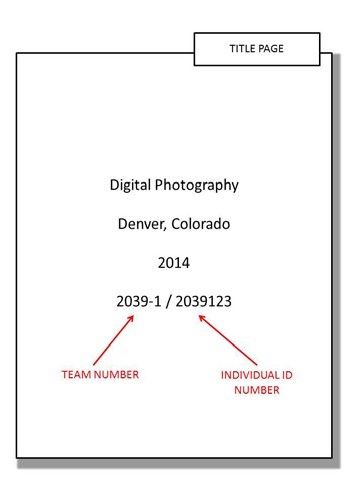
The title page is the start of the written documentation and appears as the FIRST page, INSIDE the notebook.
Here are the specifications for a Title Page:
- The Title Page is one page in length, and should not include any graphics (including Word art), logos, sketches or other identifying information. Unless a contest specifically asks for other information on the Title Page
- The Title Page should include:
-
- The Event Title
- The Conference City and State
- The Year of the Conference
- The Team/Chapter ID Number – This number should have been provided to your chapter advisor after registration for the state conference. This number will change if the project progresses from the state conference to the national conference. Do NOT include your name, school name, or any identifying information other than your ID number.
Table of Contents:
Most documentation notebooks will require a Table of Contents.
Here are the specifications for the Table of Contents:
- The Table of Contents can be as many pages as needed.
- The Table of Contents heading should be centered at the top of the page, followed by a double space.
- The items in the table of contents should include all the items called for in the event’s guidelines and they should be in the same order as called for in the guidelines.
- The names of the items in the table of contents should be flush left.
- The page numbers should be right aligned with leader lines as shown in the example shown below.
